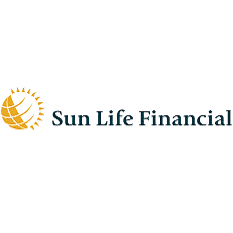Best Canadian Insurance Stocks to Buy in December 2024
Investing’s all about putting cash in what you know. Canadian insurance stocks are great for this since insurance is a simple, everyday idea. Plus, market conditions now are perfect for these stocks, and they’ve realized outstanding returns over the last few years.
I’m going to go over 3 insurance companies that I believe are some of the strongest options in the country at this point.
I’ve attempted to pick individual insurers from different insurance segments, so that there is something for everyone on this list. Of note, these stocks are in no particular order.
As always, if you’re looking for more research, top stock picks, market commentary and more, join our weekly newsletter, absolutely free by clicking here.
The top Canadian insurance stocks to buy today
- Sunlife Financial (TSX:SLF)
- Intact Financial (TSX:IFC)
- Power Corporation (TSE:POW)
Sunlife Financial (TSX:SLF)

Why I Love The Stock:
| Life insurance companies are currently in a large bull cycle |
| A buyback machine over the last half decade |
| Consistent earnings and dividend grower |
| Double digit returns on equity and invested capital |
| One of the largest names in the business |
| Exceptional balance sheet |
There are three primary life insurance companies here in Canada, and one of them is Sunlife Financial (TSE:SLF). With a market cap just over $44B, Sunlife is also one of the largest companies in the country.
The company offers insurance, retirement, asset management solutions, and wealth management services to individuals and corporations in North America and Asia.
The company also owns a Boston-based asset management firm in MFS Investment Management, and about 1/3 of its revenue comes from the asset management department.
Yielding in the 4% range, the company has an 8-year dividend growth streak and has managed to raise the dividend at an annual pace of 9.60% during this time. Out of the major life insurance companies in Canada, I view the company as the best performing over the long-term, and certainly the one I’m most confident with.
With total returns of over 170% over the last decade, the next closest competitor would be Manulife Financial, at just over 160%. That is assuming you reinvested all the dividends.
The company is expected to grow earnings at a moderate clip over the next 2-3 years, with mid-single-digit and double-digit earnings growth. Revenue on the other hand is supposed to be relatively flat, likely due to economic conditions.
In terms of the dividend, significant raises after the pandemic dividend freeze was lifted make this company’s short-term dividend growth look slightly better than expected.
But I still expect mid-single-digit growth moving forward, which is relatively strong for a large-cap, high-yielding company.
Life insurers have struggled relative to the type of insurer I’m going to talk about next. However, Sunlife has been a bit of an exception, and it does have a high yield, which is an attractive proposition for many investors.
Intact Financial (TSX:IFC)

Why I Love The Stock:
| P&C insurance model is more volatile, but more profitable |
| Company hasn’t missed a year of dividend growth since its IPO |
| Although a dominant player, still only has 20% market share |
| Has shown consistent underwriting abilities through numerous catastrophes |
| Combined ratio is one of the best in the business |
| Healthy debt-to-total-capital ratio |
Intact Financial (TSE:IFC) is slightly different than the other Canadian insurance stocks on this list. This is because Intact is what they call a “P&C”, or property and casualty insurance company. This means the company provides auto, motorcycle, and property damage insurance to Canadians instead of investment products like life insurance or annuities.
The majority of the company’s premiums are written in the personal automotive space. The company operates under BrokerLink and directly to consumers through Belairdirect.
This insurance sector is more prone to catastrophic events like fires, floods, or other significant events. Living in Alberta, I’ve witnessed numerous catastrophic events over the years, such as the Calgary floods, Fort McMurray Wildfires, and even recently, the Jasper Fire.
For this reason, I’d certainly label P&C insurers as higher risk. Their underwriting skills need to be top-notch. In my opinion, Intact’s are.
Intact has a significant market share here in Canada, making up around 20% of the P&C market. Although it was once one of the “smaller” insurance companies in Canada, with a market cap of over $45B, it is now one of the largest.
The company has one of the lower yields in the insurance sector, typically never above 2%. This low yield could deter many investors who are looking for income. However, this would be a pretty big mistake, as Intact Financial has one of the best dividends out of all financial institutions in Canada regarding dividend growth in recent years.
The company has an 19-year dividend growth streak. It hasn’t missed raising the dividend in a single year since its 2004 initial public offering. It has also consistently raised the dividend by double digits, including its most recent raise, bumping the dividend by 10%.
The company is expected to grow the top and bottom lines by high single digits over the next 2-3 years. However, the interest rate environment will certainly make earnings a bit more volatile. I’ll be keeping my eye on this moving forward.
Power Corporation (TSE:POW)

Why I Love The Stock:
| Higher-yielding stock |
| Company’s fintech investment in Wealthsimple is paying huge dividends |
| Trading at a discount to NAV |
| A Canadian Dividend Aristocrat |
| Generates significant free cash flow |
| Should benefit from a decline in interest rates |
Although Power Corporation (TSE:POW) is technically an insurance company, it has shown to be much more than that over the last while. The company is a diversified holding company with interests in financial services, communications, and many other sectors.
Another major insurer, Great-West Lifeco, is a part of the Power Financial group of companies. Power Corp also has controlling interests in IGM Financial, and Pargesa, a holding company in Europe.
As of the company’s most recent filing, it had a net asset value of $50.48~, much higher than its current stock price.
The company is a Canadian Dividend Aristocrat, yielding in the 5% range with a payout ratio of only 50%. This low payout ratio is likely a signal for future dividend growth, as the company recently raised the dividend by 7% in December of 2023.
I expected high, single-digit dividend growth to come from the company at the end of 2024 as well.
The company has driven NAV and dividend growth through excellent investments, including a stake in a brokerage you could be trading with, Wealthsimple Trade. Even just learning how to buy stocks, you have probably heard of Wealthsimple.
Power Corp doesn’t just limit itself to investments in financial companies. The company has also backed companies in the EV industry, like Lion Electric.
In terms of forward-looking growth, analysts predict the company will grow revenue at a mid-single-digit pace, and EPS growth is expected to stay relatively flat over the next year or two. If a recession is avoided and a soft landing is achieved, I have no doubt these estimates will be upgraded.
Why insurance stocks in Canada moving forward?
There’s certainly a bullish case for insurance stocks, considering the current economic environment.
Not everybody knows the complexities of the 80-page insurance policy they deliver you annually. But we know you need insurance to drive and homeowners insurance, and you’d be wise to get a life insurance policy at some point.
Even health insurance products in the United States are available to protect people from costly situations regarding their private healthcare situation.
But, you’re likely unaware that there are many different types of Canadian insurance stocks and insurance providers, and there aren’t too many “all in one” solutions here in Canada.
From P & C (property and casualty) insurers to life insurers, there is a ton of variety here among Canadian stocks. Buying one might not get you exposure to all types.
Ultimately, Canadian fintech stocks might struggle as spending relaxes due to higher interest rates. However, increasing rates benefits insurance companies and financial companies as a whole.
For the most part, insurance companies invest their collected premiums into low-risk assets, many of which are highly dependent on interest rates.
In the situation of life insurance companies, they also offer products that are highly dependent on rates. When rates go up, these companies earn more and can charge more.
Do insurance ETFs exist?
Finding a pure-play insurance ETF here in Canada won’t be easy. This is simply because we do not have enough companies nor the popularity to generate enough fund flows regarding insurance stocks.
However, something like the iShares Equal Weight Banc & Lifeco ETF (TSE:CEW), or the CI U.S. & Canada Lifeco Income ETF (TSE:FLI) can give you good exposure to the sector.
CEW is an ETF that offers exposure to both Canadian insurers and Canadian banks. At the same time, FLI is both Canadian and United States insurance companies.
